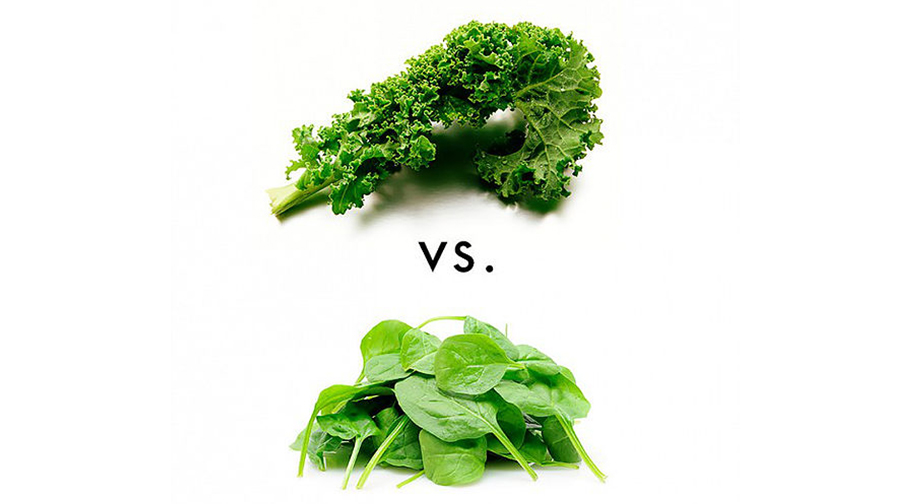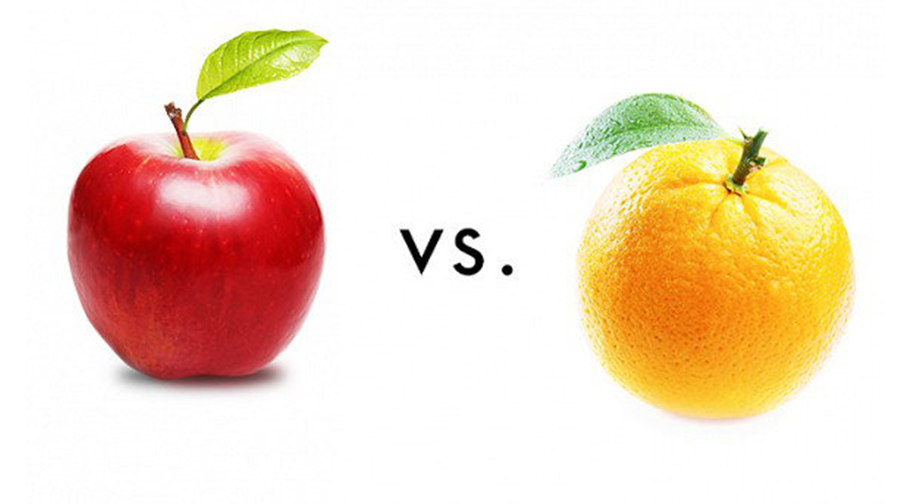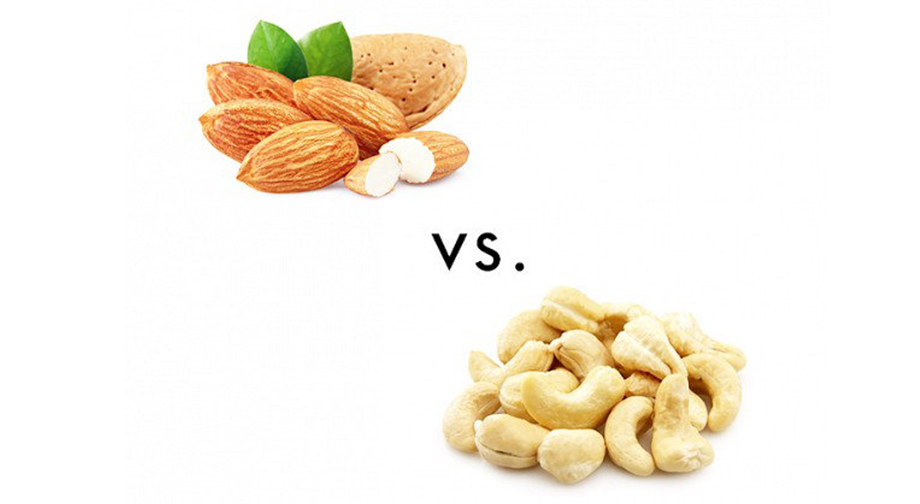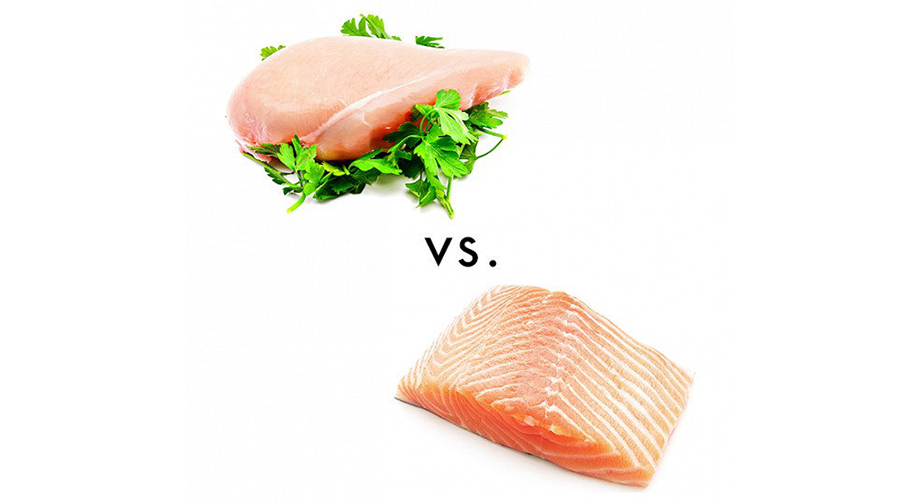We all know there is a ton of hype around health food superstar kale with people even wearing sweatshirts and carrying tote bag touting its name. But I always wanted to know if it is really that much better for you than spinach? Here is a look at a few healthy vegan and paleo favorites in a head-to-head battle to see which one packed the most nutritional punch. Remember that despite the named “winner” it is always good to eat all of these foods! I have kale, spinach, oranges, apples, cashews, almonds and salmon in my weekly rotation. For me personally, I choose not to eat chicken, mainly because I don’t like it. But I know a lot of fitness buffs who love it’s protein packed power and how easy it is to prep.
Keep reading to see the surprising results!
Kale vs. Spinach

The Breakdown
Kale (per 100 grams)
Calories: 49
Protein: 4.3 grams
Key Nutrients: 200 percent daily value of vitamin C, 199 percent vitamin A, 14 percent potassium
Spinach (per 100 grams)
Calories: 23
Protein: 2.9 grams
Key Nutrients: 52 percent daily value of beta carotene, 180 percent vitamin A, 19 percent magnesium, 46 percent vitamin C
The Winner is Spinach
Though kale has the popular vote, we have to give this one to spinach. A study done by a researcher at the William Paterson University suggests that spinach is more nutritionally dense than kale. The study measured the levels of 17 essential nutrients (zinc, vitamin A, and protein among them) in 47 fruits and veggies; spinach beat out kale by over 30 percentage points. However, more dark leafy greens are a key to GET THE GLOW so make sure you eat both!
Apples vs. Oranges

The Breakdown
Apple (one medium):
Calories: 95
Sugar: 19 grams
Fiber: 4.4 grams
Carbohydrates: 25 grams
Other Key Nutrients: 14 percent vitamin C, one percent vitamin A, five percent vitamin B-6, one percent calcium
Orange (one medium)
Calories: 62
Sugar: 12 grams
Fiber: 3.1 grams
Carbohydrates: 15 grams
Other Key Nutrients: 116 percent daily value of vitamin C, five percent vitamin A, five percent vitamin B-6, five percent calcium
The Winner is Oranges
A single orange contains tons of vitamin C, which helps boost immunity. Not to mention, oranges are both lower in both sugar and calories. If you are watching your sugar intake, eat apples of the green variety. You can also add a little sweetness when GETTING YOUR GLOW ON juicing by adding some green
When I am trying to be mindful of my green juices being less sweet, I just add a 1/4 of green apple and it sweetens it up perfectly.
Almonds vs. Cashews

The Breakdown
Almonds (per ounce)
Calories: 163
Fat: 14 grams
Carbohydrates: 6 grams
Dietary Fiber: 3.5 grams
Other Key Nutrients: 48 percent daily value of vitamin E, 24 percent magnesium, 19 percent phosphorus, 11 percent zinc
Cashews (per ounce)
Calories: 157
Fat: 12 grams
Carbohydrates: 9 grams
Dietary Fiber: 0.9 grams
Other Key Nutrients: 20 percent daily value of magnesium, 10 percent iron, five percent vitamin B-6
The Winner is Almonds
This was my favorite comparison, I love them both and consume both daily because natural fats help you GET THE GLOW! While the fat and calorie counts of these two nuts have negligible differences, it’s the high amounts of vitamin E—an antioxidant that helps with glow-getting healthy skin and eyes, and the extra dietary fiber that makes almonds the winner.
Salmon vs. Chicken Breast

The Breakdown
Salmon (3-ounce serving)
Calories: 177
Fat: 11 grams
Protein: 17 grams
Other Key Nutrients: Nearly 50 percent daily value of niacin (which may help prevent memory loss), 46 percent vitamin B-12, 55 percent omega-3 fats
Chicken (3-ounce serving)
Calories: 131
Fat: 3.5 grams
Protein: 24 grams
Other Key Nutrients: 25 percent daily value of vitamin B-6, 45 percent niacin
The Winner is ….Depends on Your Goals!
Both are excellent sources of protein.
From a balanced nutrition standpoint, chicken breast edges out the salmon with less fat and fewer calories. If you are looking to reduce your calories and fat, this one is for you.
By far and away winner for getting your GLOW ON is salmon! Salmon is packed with lovely natural fats and the skin is beyond good for you if you can stomach that (more on how to cook delectable fish with crispy skin you will actually love to eat in another post soon!)
Be sure to choose wild-caught salmon over farm-raised, because the farmed contains less toxic polychlorinated biphenyl.





No Comments